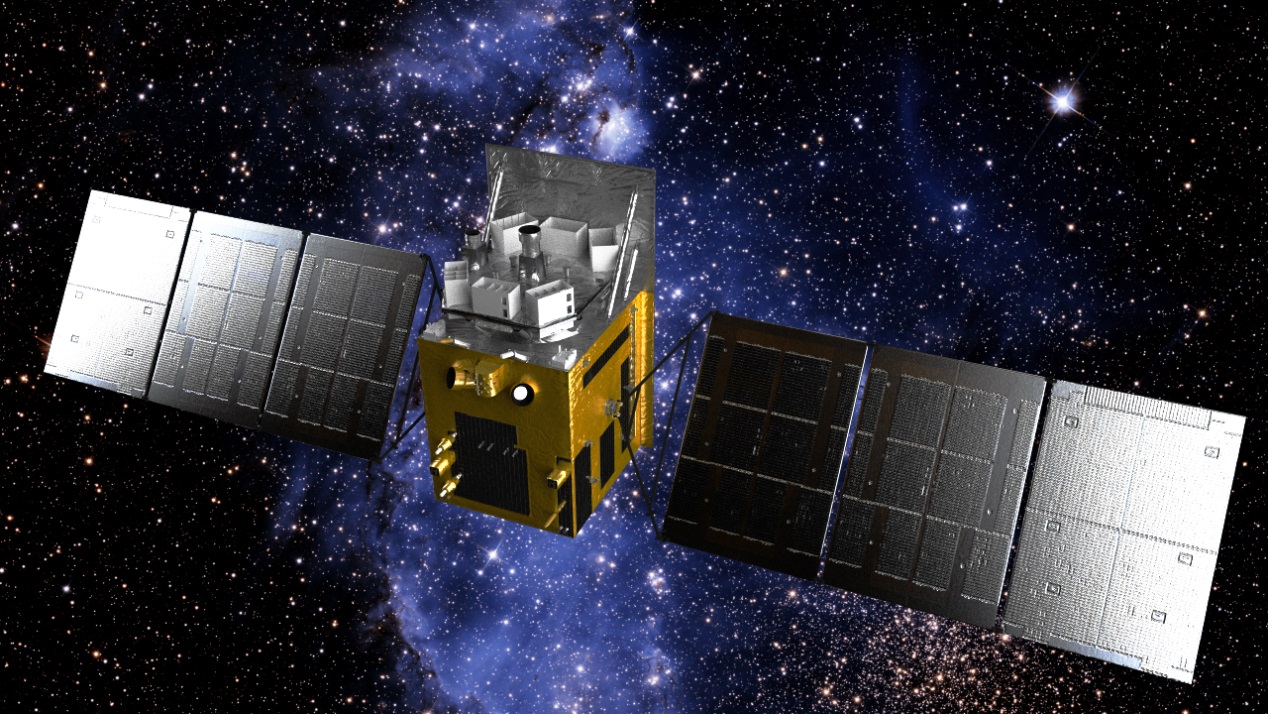
Insight-HXMT, China’s first X-ray astronomical satellite, has made an important contribution to gravitational wave astronomy, by setting a strict upper limit on electromagnetic radiation produced during a recently discovered gravitational wave event.
The Laser Interferometer Gravitational Wave Observatory (LIGO) and the European Gravitational Observatory Virgo announced on Oct. 16th 2017 the discovery of the gravitational wave event GW170817.
It contrasts with four previous gravitational wave events, which were caused by the merging of black holes, and this event is thought to have been created by the merging of two neutron stars. It is widely believed that this kind of new gravitational wave event can also produce strong electromagnetic (EM) emission at the time of merger.

An artist’s impression of two stars orbiting each other (left). The orbit shrinks as the system emits gravitational waves (middle). When the stars merge (right), there is a resulting powerful emission of gravitational waves. (Image by NASA)
Dozens of observatories joined in an observation campaign to search for the EM counterpart of this event, searching at frequencies from radio to very high energy gamma-rays. Insight-HXMT, which was launched on June 15th 2017, has made an important contribution by setting a stringent upper limit on its prompt emission flux in the 0.2-5 MeV range.

Artist's impression of the Insight-HXMT satellite in space (Image by IHEP)
Only four X-ray and gamma-ray telescopes (Fermi, INTEGRAL, Insight-HXMT, and Konus-Wind) were monitoring the sky region of GW170817 when the event took place. Of these, Insight-HXMT has the largest detection area and best time resolution in the 0.2-5 MeV range.
About two seconds after the gravitational wave event, a weak short gamma-ray burst (GRB 170817A) independently triggered the Fermi Gamma Burst Monitor (GMB). The GBM localization is broadly consistent with the gravitational wave location given by the LIGO detector. Soon after, this gamma-ray burst was confirmed by offline analysis of data from the INTEGRAL satellite’s SPI-ACS system.
However, different from theoretical predictions, the emission of GW170817 is weak and soft, and so the flux in the MeV energy band is extremely low. Neither Insight-HXMT nor any of the other telescopes has detected any significant emission in this energy range.
Insight-HXMT then set the most stringent MeV flux upper limit, which is important for constraining the overall properties of GW170817. The observational results of Insight-HXMT will be published in a paper on the multi-messenger astrophysics of GW170817 that will be appear in The Astrophysical Journal Letters, and in a separate paper to be published in SCIENCE CHINA Physics, Mechanics & Astronomy.
According to Einstein' s theory of general relativity, the merging (coalescence) of two compact stars is able to create ripples in space-time known as gravitational waves. On September 14th, 2015, LIGO detected the first gravitational event. In honor of this achievement, the leaders of the LIGO experiment, Rainer Weiss, Barry Barish, and Kip Thorne were awarded the 2017 Nobel Prize in Physics.

86-10-68597521 (day)
86-10-68597289 (night)

52 Sanlihe Rd., Xicheng District,
Beijing, China (100864)

